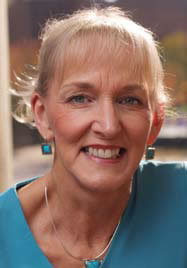Making Transitions Smoother for Young Cancer Patients
May 3, 2010
Mason researchers Jean B. Moore and Carol Kaffenberger have each spent a large part of their careers trying to make life better for children with cancer. Fortunately for everyone involved, they've decided to join forces.
The two are working on the Student Reentry Project, which examines how students who have cancer and the school systems are affected. They have collected data from families, school personnel, and health care professionals to identify current services provided by hospitals and school districts and the level of satisfaction families have for those services.

Carol Kaffenberger
While cancer is still the leading cause of death for children under age 15, it is not the most prevalent chronic illness, says Kaffenberger, who is an associate professor of education in the College of Education and Human Development (CEHD). Even in a large school district such as Fairfax County's, less than one percent of the student population is diagnosed with cancer.
Coming from a school counseling background, Kaffenberger understands the challenges of working with students with chronic illnesses. "There is a lot of confusion about who should be the point person in these situations to facilitate communication between the students, the educators and school administration, physicians, and the families."
In addition, there is the question of counselor preparation. "The school counselors were feeling, 'I wasn't trained to do this,'" says Kaffenberger. "They were inventing the wheel. Services were sometimes spotty. Parents either praised the school for their support or had terrible stories to tell."
In response to the clear need for training, Kaffenberger produced training materials and eventually developed a manual, which she adapted to the Fairfax County Public Schools (FCPS). Since 2003, she has trained more than 500 social workers, health care professionals, and school counselors who provide services to these children in FCPS.
Over the years, Moore and Kaffenberger often ran into each other at professional meetings and would say they should work together some day. Eventually, an opportunity arose.
"Jean knew what I was working on," Kaffenberger says. "So we started talking and posed the question, 'What don't we know?'"
They developed a survey instrument that would help them gather the data they needed. Moore, assistant dean of nursing research development in the College of Health and Human Services (CHHS), has had a lot of experience developing such instruments, as well as collecting and analyzing data, and she has been working with pediatric oncology patients most of her career.
Even while working as a full-time faculty member at Catholic University, when off during the summer, Moore continued her nursing practice at the Children's National Medical Center in Washington, D.C. "I always asked to be placed in the oncology unit," she says. "There is something very special about working with these children and their families."
About 10 years ago she began publishing her research about young cancer patients and has traveled the world to present her findings. Much of her research has been focused on patient self-care, emotional adjustments of patients and their families, and conflict between families and health care professionals.
For Moore, what interested her in this project was the question of what nurses could do to facilitate the student's reentry to school after treatment, as well as help them stay connected while they were out. "It is so important for [the students] to stay in touch not only academically, but socially," says Moore.

Also, because of her extensive experience with the Children's National Medical Center, she understood what a large undertaking "staying in touch" could be. Because of its location, Children's has patients from a number of states surrounding it, which in turn translates into a larger number of school systems the students could be coming from and returning to.
"Just trying to get these students tutors can be a very complicated process," she says.
With the support of a grant from the Provost's Office and funding from the dean of CHHS and the assistance of Patricia Goldberg, a doctoral student in the School of Nursing; Kyeung Mi Oh, a postdoctoral nursing researcher; and Robin Hudspeth, a graduate student in CEHD, Moore and Kaffenberger have finished collecting data and have begun their analysis.
In addition to publishing their findings, they plan to share their research with a number of groups that have been integral to their work including the Association of Pediatric Hematology and Oncology Nurses, as well as FCPS. Kaffenberger also has begun discussions with the Prince William County Public Schools about its needs for this kind of training and how she can be of assistance.
"People always say to me, 'I don't remember there being so many sick children at school when I was a child,' but the truth is a lot of those children died," she says. "In 1960, the prognosis was not good for cancer patients. Now we have remission rates of more than 70 percent. Children are able to come back to school sooner. Science has made this possible. Now we have to prepare the schools to address the educational and psychosocial needs of these children."
—Colleen Kearney Rich
